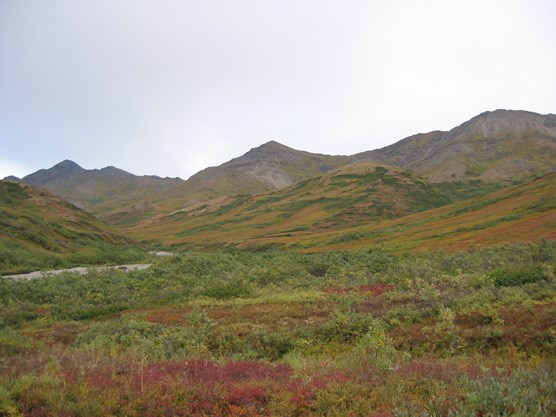14 Climate: Systems and Change
LEARNING OUTCOMES
- Explain the controlling factors of global climates.
- Describe the various global climates and biomes classified using the Köppen Classification System.
- Analyze Earth’s climatic past and how scientists measure and collect climate data.
- Describe the causes of short-term and long-term climate change.
- Determine why the overwhelming majority of scientists believe the current warming of the planet is because of human activity.
ESSENTIAL QUESTIONS
- In what ways does climate influence regional culture?
- What impacts could a changing climate have on local, regional, and international social, economic, and geopolitical stability?
- Should global environmental issues like climate change be resolved by individuals, nations, or international institutions like the United Nations?
- What is your worldview on global environmental issues and how they should be addressed?
Controls of Climate: LACEMOPS
Although almost anything can happen with the weather, climate is more predictable. The weather on a particular winter day in San Diego may be colder than on the same day in Lake Tahoe, but, on average, Tahoe’s winter climate is significantly colder than San Diego’s. Climate then is the long-term average of weather. Good climate is why we choose to vacation in Hawaii in February, even though the weather is not guaranteed to be good!
Climate is the average of weather in that location over a long period of time, usually for at least 30 years. A location’s climate can be described by its air temperature, humidity, wind speed and direction, and the type, quantity, and frequency of precipitation. Climate can change, but only over long periods of time. The climate of a region depends on its position relative to many things. These factors are described in the next sections.
A useful mnemonic device for remembering all the major influences is LACEMOPS. These are the same factors influencing weather, but over a long period of time.
LACEMOPS
- Latitude
- Air Masses
- Continentality
- Elevation
- Mountain barriers (orographic effect)
- Ocean Currents
- Pressure Systems
- Storm Tracks
LATITUDE
The main factor influencing the climate of a region is latitude because different latitudes receive different amounts of solar radiation. To review from the Earth’s Atmosphere chapter:
-
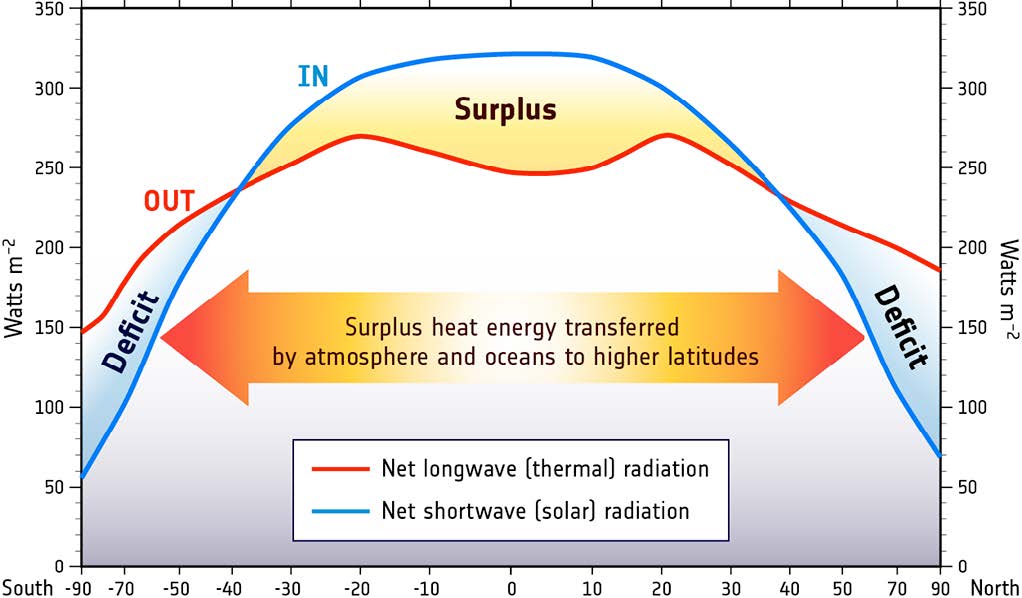
Energy moves from the equator to the poles. The equator receives the most solar radiation. Days are equally long year-round and the sun is just about directly overhead at midday.
- The polar regions receive the least solar radiation. The night lasts six months during the winter. Even in summer, the sun never rises very high in the sky. Sunlight filters through a thick wedge of atmosphere, making the sunlight much less intense. The high albedo, because of ice and snow, reflects a good portion of the sun’s light.
ATMOSPHERIC CIRCULATION
Recall from the Earth’s Atmosphere chapter the circulation cells and global wind belts. The position of a region relative to the circulation cells and wind belts has a great effect on its climate. In an area where the air is mostly rising or sinking, there is not much wind.
The Intertropical Convergence Zone (ITCZ)
is the low pressure area near the equator in the boundary between the two Hadley Cells. The air rises so that it cools and condenses to create clouds and rain. Climate along the ITCZ is therefore warm and wet. Early mariners called this region the doldrums because their ships were often unable to sail because there were no steady winds.
The ITCZ migrates slightly with the season. Land areas heat more quickly than the oceans. Because there are more land areas in the Northern Hemisphere, the ITCZ is influenced by the heating effect of the land. In Northern Hemisphere summer, it is approximately 5o north of the equator while in the winter it shifts back and is approximately at the equator. As the ITCZ shifts, the major wind belts also shift slightly north in summer and south in winter, which causes the wet and dry seasons in this area.
Hadley Cell and Ferrell Cell Boundaries
At about 30 °N and 30 °S, the air is fairly warm and dry because much of it came from the equator where it lost most of its moisture at the ITCZ. At this location the air is descending, and sinking air warms and causes evaporation. Mariners named this region the horse latitudes. Sailing ships were sometimes delayed for so long by the lack of wind that they would run out of water and food for their livestock. Sailors tossed horses and other animals over the side after they died. Sailors sometimes didn’t make it either.
Prevailing Winds
The prevailing winds are the bases of the Hadley, Ferrell, and Polar Cells. These winds greatly influence the climate of a region because they bring the weather from the locations they come from. For example, in California, the predominant winds are the westerlies blowing in from the Pacific Ocean, which bring in relatively cool air in summer and relatively warm air in winter. Local winds also influence local climate. For example, land breezes and sea breezes moderate coastal temperatures.
CONTINENTAL POSITION
When a particular location is near an ocean or large lake, the body of water plays an extremely important role in affecting the region’s climate.
- A maritime climate is strongly influenced by the nearby sea. Temperatures vary a relatively small amount seasonally and daily. For a location to have a true maritime climate, the winds must most frequently come off the sea.
- A continental climate is more extreme, with greater temperature differences between day and night and between summer and winter.
The ocean’s influence in moderating climate can be seen in the following temperature comparisons. Each of these cities is located at 37 °N latitude, within the westerly winds.
OCEAN CURRENTS
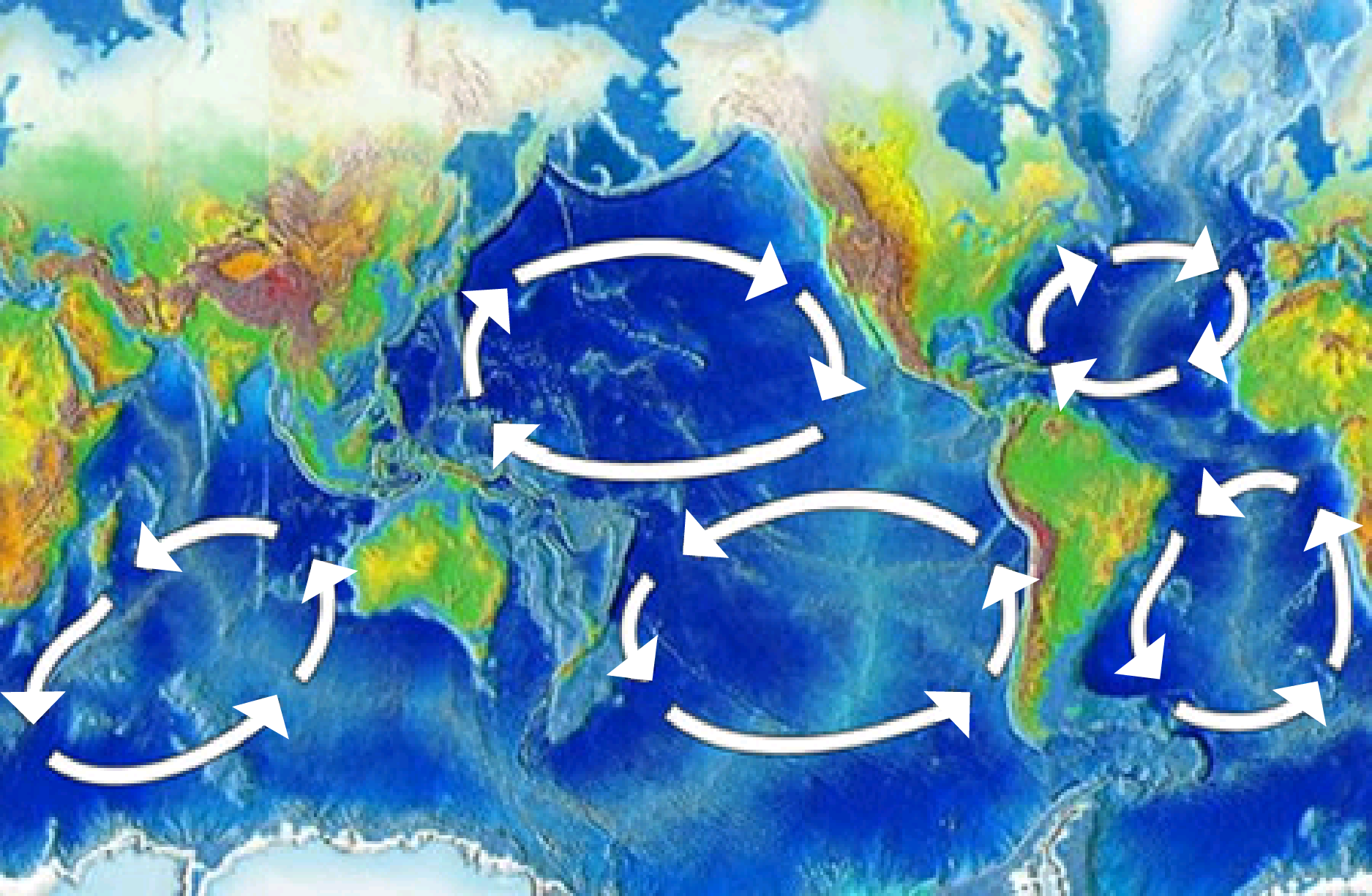
The temperature of the water offshore influences the temperature of a coastal location, particularly if the winds come off the sea. The cool waters of along the western United States is caused by a clockwise rotating ocean current that is bringing cold water from the arctic toward the equator. The climatic effect is that coastal regions of California, Oregon, and Washington are are cool. Coastal upwelling also brings cold, deep water up to the ocean surface off of California, which contributes to the cool coastal temperatures. But that same ocean current brings warm, tropical water to eastern Japan.
In the Atlantic Ocean, the northern ocean current, called the Gulf Stream, brings warm water from the tropics to the southern states. This is a major reason why the southern states experience humid conditions in the summer and tornadoes because of all this warm moisture. The Gulf Stream also impacts Europe by bringing warm water northward, making this region that is rather northward warmer than expected.
MOUNTAIN BARRIERS
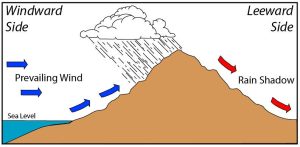
Air pressure and air temperature decreases with altitude. The closer molecules are packed together, the more likely they are to collide. Collisions between molecules give off heat, which warms the air. At higher altitudes, the air is less dense and air molecules are more spread out and less likely to collide. A location in the mountains has lower average temperatures than one at the base of the mountains. In Colorado, for example, Lakewood (5,640 feet) average annual temperature is 62 °F (17 °C), while Climax Lake (11,300 feet) is 42 °F (5.4 °C).
Mountain ranges have two effects on the climate of the surrounding region. The first is something called the rainshadow effect, which brings warm dry climate to the leeward size of a mountain range, was described in the Earth’s Atmosphere chapter.
The second effect mountains have on climate systems is the ability to separate coastal regions from the rest of the continent. Since a maritime air mass may have trouble rising over a mountain range, the coastal area will have a maritime climate but the inland area on the leeward side will have a continental climate.
Climate Zones and Biomes
A climate zone results from the climate conditions of an area: its temperature, humidity, amount and type of precipitation, and the season. A climate zone is reflected in a region’s natural vegetation. Perceptive travelers can figure out which climate zone they are in by looking at the vegetation, even if the weather is unusual for the climate on that day.
The major factors that influence climate determine the different climate zones. In general, the same type of climate zone will be found at similar latitudes and in similar positions on nearly all continents, both in the Northern and Southern Hemispheres. The one exception to this pattern is the climate zones called the continental climates, which are not found at higher latitudes in the Southern Hemisphere. This is because the Southern Hemisphere land masses are not wide enough to produce a continental climate.
https://www.youtube.com/embed/bjwmrg__ZVw[/embed]
The most common system used to classify climatic zones is the Köppen classification system. This system is based on the temperature, the amount of precipitation, and the times of year when precipitation occurs. Since climate determines the type of vegetation that grows in an area, vegetation is used as an indicator of climate type.
A climate type together with its plants and animals make up a biome. The organisms of a biome share certain characteristics around the world, because their environment has similar advantages and challenges. The organisms have adapted to that environment in similar ways over time. For example, different species of cactus live on different continents, but they have adapted to the harsh desert in similar ways.
https://youtu.be/lrPS2HiYVp8[/embed]
Tropical Moist Climates (Group A)

These climates are found in a band about 15° to 25° N and S of the equator. What climate characteristics is the tropical moist climate group likely to have?
- Temperature: Intense sunshine; each month has an average temperature of at least 18°C (64°F).
- Rainfall: Abundant, at least 150 cm (59 inches) per year.
The wet tropics have almost no annual temperature variation and tremendous amounts of rain fall year round, between 175 and 250 cm (65 and 100 inches). These conditions support the tropical rainforest biome. Tropical rainforests are dominated by densely packed, broadleaf evergreen trees. These rainforests have the highest number of species or biodiversity of any ecosystem.
TROPICAL MONSOON (Am)
The tropical monsoon climate has very low precipitation for one to two months each year. Rainforests grow here because the dry period is short, and the trees survive off of soil moisture. This climate is found where the monsoon winds blow, primarily in southern Asia, western Africa, and northeastern South America.
TROPICAL WET AND DRY (As or Aw)
The tropical wet and dry climate lies between about 5° and 20° latitude, around the location of the ITCZ. In the summer, when the ITCZ drifts northward, the zone is wet. In the winter, when the ITCZ moves toward the equator, the region is dry. This climate exists where strong monsoon winds blow from land to sea, such as in India.
Rainforests cannot survive the months of low rainfall, so the typical vegetation is savanna. This biome consists mostly of grasses, with widely scattered deciduous trees and rare areas of denser forests.
Dry Climates (Group B)

These have less precipitation than evaporation. Dry climate zones cover about 26% of the world’s land area. What climate characteristics is the dry climate group likely to have?
- Temperature: Abundant sunshine. Summer temperatures are high; winters are cooler and longer than Tropical Moist climates
- Rainfall: Irregular; several years of drought are often followed by a single year of abundant rainfall
ARID DESERT (Bw)
Low-latitude, arid deserts are found between 15° to 30° N and S latitudes. This is where warm dry air sinks at high pressure zones. True deserts make up around 12% of the world’s lands. In the Sonoran Desert of the southwestern United States and northern Mexico, skies are clear. The typical weather is extremely hot summer days and cold winter nights. Although annual rainfall is less than 25 cm (10 inches), rain falls during two seasons. Pacific storms bring winter rains and monsoons bring summer rains. Since organisms do not have to go too many months without some rain, a unique group of plants and animals can survive in the Sonoran desert.
SEMI-ARID OR STEPPE (Bs)
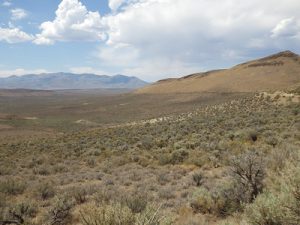
Higher latitude semi-arid deserts, also called steppe, are found in continental interiors or in rainshadows. Semi-arid deserts receive between 20 and 40 cm (8 to 16 inches) of rain annually. The annual temperature range is large. In the United States, the Great Plains, portions of the southern California coast, and the Great Basin are semi-arid deserts.
Moist Subtropical Mid-latitude (Group C)
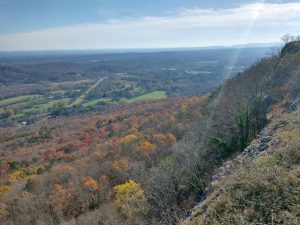
What climate characteristics is the moist subtropical group likely to have?
- Temperature: The coldest month ranges from just below freezing to almost balmy, between -3°C and 18°C (27° to 64°F). Summers are mild with average temperatures above 10°C (50°F). Seasons are distinct.
- Rainfall: There is plentiful annual rainfall.
DRY SUMMER SUBTROPICAL OR MEDITERRANEAN CLIMATES (Cs)
The Dry Summer Subtropical climate is found on the western sides of continents between 30° and 45° latitude. Annual rainfall is 30 to 90 cm (14 to 35 inches), most of which comes in the winter.
The climate is typical of coastal California, which sits beneath a summertime high pressure for about five months each year. Land and sea breezes make winters moderate and summers cool. Vegetation must survive long summer droughts. The scrubby, woody vegetation that thrives in this climate is called chaparral.
HUMID SUBTROPICAL (Cfa)
The Humid Subtropical climate zone is found mostly on the eastern sides of continents. Rain falls throughout the year with annual averages between 80 and 165 cm (31 and 65 inches). Summer days are humid and hot, from the lower 30’s up to 40°C (mid-80’s up to 104°F). Afternoon and evening thunderstorms are common. These conditions are caused by warm tropical air passing over the hot continent. Winters are mild, but middle-latitude storms called cyclones may bring snow and rain. The southeastern United States, with its hot humid summers and mild, but frosty winters, is typical of this climate zone.
MARINE WEST COAST CLIMATE (Cfb)
This climate lines western North America between 40° and 65° latitude, an area known as the Pacific Northwest. Ocean winds bring mild winters and cool summers. The temperature range, both daily and annually, is fairly small. Rain falls year round, although summers are drier as the jet stream moves northward. Low clouds, fog, and drizzle are typical. In Western Europe the climate covers a larger region since no high mountains are near the coast to block wind blowing off the Atlantic.
Humid Continental (Group D)

Continental (Group D) climates are found in most of the North American interior from about 40°N to 70°N. What climate characteristics is the continental group most likely to have?
- Temperature: The average temperature of the warmest month is higher than 10°C (50°F) and the coldest month is below -3°C (-27°F).
- Precipitation: Winters are cold and stormy (look at the latitude of this zone and see if you can figure out why). Snowfall is common and snow stays on the ground for long periods of time.
Trees grow in continental climates, even though winters are extremely cold, because the average annual temperature is fairly mild. Continental climates are not found in the Southern Hemisphere because of the absence of a continent large enough to generate this effect.
HUMID CONTINENTAL (Dfa, Dfb)
The humid continental climates are found around the polar front in North America and Europe. In the winter, middle-latitude cyclones bring chilly temperatures and snow. In the summer, westerly winds bring continental weather and warm temperatures. The average July temperature is often above 20°C (70°F). The region is typified by deciduous trees, which protect themselves in winter by losing their leaves.
The two variations of this climate are based on summer temperatures.
- Dfa, long, hot summers: summer days may be over 38°C (100°F), nights are warm and the temperature range is large, perhaps as great as 31°C (56°F). The long summers and high humidity foster plant growth.
- Dfb, long, cool summers: summer temperatures and humidity are lower. Winter temperatures are below -18°C (0°F) for long periods.
SUBPOLAR (Dfc)
The subpolar climate is dominated by the continental polar air that masses over the frigid continent. Snowfall is light, but cold temperatures keep snow on the ground for months. Most of the approximately 50 cm (20 inches) of annual precipitation falls during summer cyclonic storms. The angle of the Sun’s rays is low but the Sun is visible in the sky for most or all of the day during the summer, so temperatures may get warm, but are rarely hot. These continental regions have extreme annual temperature ranges. The boreal, coniferous forests found in the subpolar climate are called taiga and have small, hardy, and widely spaced trees. Taiga vast forests stretch across Eurasia and North America.
Polar Climates (Group E)
Polar climates are found across the continents that border the Arctic Ocean, Greenland, and Antarctica. What climate characteristics is the polar climate group most likely to have?
- Temperature: Winters are entirely dark and bitterly cold. Summer days are long, but the sun is low on the horizon so summers are cool. The average temperature of the warmest month at less than 10°C (50°F). The annual temperature range is large.
- Precipitation: The region is dry with less than 25 cm (10 inches) of precipitation annually; most precipitation occurs during the summer.
POLAR TUNDRA (ET)
The polar tundra climate is continental, with severe winters. Temperatures are so cold that a layer of permanently frozen ground, called permafrost forms below the surface. This frozen layer can extend hundreds of meters deep. The average temperature of the warmest months is above freezing, so summer temperatures defrost the uppermost portion of the permafrost. In winter, the permafrost prevents water from draining downward. In summer, the ground is swampy. Although the precipitation is low enough in many places to qualify as a desert, evaporation rates are also low, so the landscape receives more usable water than a desert. Because of the lack of ice-free land near the South Pole, there is very little tundra in the Southern Hemisphere. The only plants that can survive the harsh winters and soggy summers are small ground-hugging plants like mosses, lichens, small shrubs, and scattered small trees that make up the tundra.
ICE CAP
Ice caps are found mostly on Greenland and Antarctica, about 9% of the Earth’s land area. Ice caps may be thousands of meters thick. Ice cap areas have extremely low average annual temperatures, e.g. -29°C (-20°F) at Eismite, Greenland. Precipitation is low because the air is too cold to hold much moisture. Snow occasionally falls in the summer.
Highland Climates (Group H)
When climate conditions in a small area are different from those of the surroundings, the climate of the small area is called a microclimate. The microclimate of a valley may be cool relative to its surroundings since cold air sinks. The ground surface may be hotter or colder than the air a few feet above it, because rock and soil gain and lose heat readily. Different sides of a mountain will have different microclimates. In the Northern Hemisphere, a south-facing slope receives more solar energy than a north-facing slope, so each side supports different amounts and types of vegetation. Altitude mimics latitude in climate zones. Climates and biomes typical of higher latitudes may be found in other areas of the world at high altitudes. A short distance up a mountain results in significant climate change compared to travelling the same distance on flat plains.
Climate Change in Earth History
For the past two centuries, climate has been relatively stable. People placed their farms and cities in locations that were in a favorable climate without thinking that the climate could change. But climate has changed throughout Earth history, and a stable climate is not the norm. In recent years, Earth’s climate has begun to change again. Most of this change is warming because of human activities that release greenhouse gases into the atmosphere. The effects of warming are already being seen and will become more extreme as temperature rise.
Climate has changed throughout Earth history. Much of the time Earth’s climate was hotter and more humid than it is today, but climate has also been colder, as when glaciers covered much more of the planet. The most recent ice ages were in the Pleistocene Epoch, between 1.8 million and 10,000 years ago. Glaciers advanced and retreated in cycles, known as glacial and interglacial periods. With so much of the world’s water bound into the ice, sea level was about 125 meters (395 feet) lower than it is today. Many scientists think that we are now in a warm, interglacial period that has lasted about 10,000 years.
For the past 2,000 years, climate has been relatively mild and stable when compared with much of Earth’s history. Why has climate stability been beneficial for human civilization? Stability has allowed the expansion of agriculture and the development of towns and cities.
Fairly small temperature changes can have major effects on global climate. The average global temperature during glacial periods was only about 5.5 °C (10 °F) less than Earth’s current average temperature. Temperatures during the interglacial periods were about 1.1 °C (2.0 °F) higher than today.
Since the end of the Pleistocene, the global average temperature has risen about 4°C (7° F). Glaciers are retreating and sea level is rising. While climate is getting steadily warmer, there have been a few more extreme warm and cool times in the last 10,000 years. Changes in climate have had effects on human civilization.
- The Medieval Warm Period from 900 to 1300 A.D. allowed Vikings to colonize Greenland and Great Britain to grow wine grapes.
- The Little Ice Age, from the 14th to 19th centuries, the Vikings were forced out of Greenland and humans had to plant crops further south.
Short-term Climate Changes
Short-term changes in climate are common. The largest and most important of these is the oscillation between El Niño and La Niña conditions. This cycle is called the ENSO (El Niño southern oscillation). The ENSO drives changes in climate that are felt around the world about every two to seven years.
In a normal year, the trade winds blow across the Pacific Ocean near the equator from east to west (toward Asia). A low pressure cell rises above the western equatorial Pacific. Warm water in the western Pacific Ocean and raises sea levels by one-half meter. Along the western coast of South America, the Peru Current carries cold water northward, and then westward along the equator with the trade winds. Upwelling brings cold, nutrient-rich waters from the deep sea.
In an El Niño year, when water temperature reaches around 28 °C (82 °F), the trade winds weaken or reverse direction and blow east (toward South America). Warm water is dragged back across the Pacific Ocean and piles up off the west coast of South America. With warm, low-density water at the surface, upwelling stops. Without upwelling, nutrients are scarce and plankton populations decline. Since plankton form the base of the food web, fish cannot find food, and fish numbers decrease as well. All the animals that eat fish, including birds and humans, are affected by the decline in fish.
By altering atmospheric and oceanic circulation, El Niño events change global climate patterns.
- Some regions receive more than average rainfall, including the west coast of North and South America, the southern United States, and Western Europe.
- Drought occurs in other parts of South America, the western Pacific, southern and northern Africa, and southern Europe.
An El Niño cycle lasts one to two years. Often normal circulation patterns resume. Sometimes circulation patterns bounce back quickly and extremely, called La Niña.
In a La Niña year, as in a normal year, trade winds moves from east to west and warm water piles up in the western Pacific Ocean. Ocean temperatures along coastal South America are colder than normal (instead of warmer, as in El Niño). Cold water reaches farther into the western Pacific than normal.
Other important oscillations are smaller and have a local, rather than global, effect. The North Atlantic Oscillation mostly alters climate in Europe. The Mediterranean also goes through cycles, varying between being dry at some times, and warm and wet at others.
Causes of Long-term Climate Change
PLATE TECTONICS
Plate movement and location can alter climate. Over millions to tens of millions of years as seas open and close, ocean currents may distribute heat differently. For example, when all the continents are joined into one supercontinent (such as Pangaea), nearly all locations experience a continental climate except for a small area along the coast. When the continents separate, heat is more evenly distributed because there’s more coastal land and even interior land is, on average, closer to the ocean.
Plate tectonic movements may help start an ice age. When continents are located near the poles, ice can accumulate, which may increase albedo and lower global temperature. Low enough temperatures may start a global ice age.
Plate motions trigger volcanic eruptions, which release dust and CO2 into the atmosphere. Ordinary eruptions, even large ones, have only a short-term effect on weather. Massive eruptions of the fluid lavas that create lava plateaus release much more gas and dust, and can change climate for many years. This type of eruption is exceedingly rare; none has occurred since humans have lived on Earth.
MILANKOVITCH CYCLES
The most extreme climate of recent Earth history was the Pleistocene. This time period began 2 million years ago. Scientists attribute a series of ice ages of the Pleistocene to variation in the Earth’s position relative to the Sun, known as Milankovitch cycles. The Earth goes through regular variations in its position relative to the Sun. There appear to be three processes and each has a time period lasting tens of thousands of years. The shape of the Earth’s orbit changes slightly as it goes around the Sun. The orbit varies from more circular to more elliptical in a cycle lasting between 90,000 and 100,000 years. When the orbit is more elliptical, there is a greater difference in solar radiation between winter and summer.
The planet wobbles on its axis of rotation. At one extreme of this 27,000 year cycle, the Northern Hemisphere points toward the Sun when the Earth is closest to the Sun. Summers are much warmer and winters are much colder than now. At the opposite extreme, the Northern Hemisphere points toward the Sun when it is farthest from the Sun. This results in chilly summers and warmer winters.
The planet’s tilt on its axis varies between 22.1° and 24.5°. Seasons are caused by the tilt of Earth’s axis of rotation, which is at a 23.5° angle now. When the tilt angle is smaller, summers and winters differ less in temperature. This cycle lasts 41,000 years.
When these three variations are charted out, a climate pattern of about 100,000 years emerges. Ice ages correspond closely with Milankovitch cycles. Since glaciers can form only over land, ice ages only occur when landmasses cover the polar regions. Therefore, Milankovitch cycles are also connected to plate tectonics.
The animation below demonstrates the three main components of the Milankovitch cycles.
[/video]
SUN VARIATION

Stars have life cycles. Some grow, some contract. The Sun is still growing and over the last 4.6 B years the size of the sun has increased and the energy it releases has increased by about 33%.
The amount of energy the Sun radiates is variable. Sunspots are magnetic storms on the Sun’s surface that increase and decrease over an 11-year cycle. When the number of sunspots is high, solar radiation is also relatively high. But the entire variation in solar radiation is tiny relative to the total amount of solar radiation that there is and there is no known 11-year cycle in climate variability. The Little Ice Age corresponded to a time when there were no sunspots on the Sun.
CHANGES IN ATMOSPHERIC GREENHOUSE GAS LEVELS
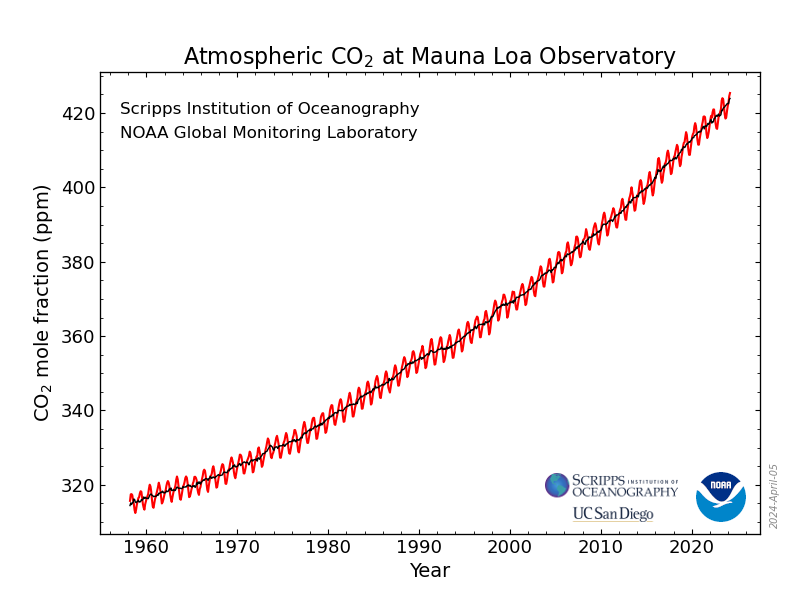
Since greenhouse gases trap the heat that radiates off the planet’s surfaces what would happen to global temperatures if atmospheric greenhouse gas levels decreased? What if greenhouse gases increased? A decrease in greenhouse gas levels decreases global temperature and an increase raises air temperature.
Greenhouse gas levels have varied throughout Earth history. For example, CO2 has been present at concentrations less than 200 parts per million (ppm) and more than 5,000 ppm. But for at least 650,000 years, CO2 has never risen above 300 ppm, during either glacial or interglacial periods. Natural processes add (volcanic eruptions and the decay or burning of organic matter) and remove absorption by plants, animal tissue, and the ocean) CO2 from the atmosphere. When plants are turned into fossil fuels the CO2 in their tissue is stored with them. So CO2 is removed from the atmosphere. What does this do to Earth’s average temperature? Fossil fuel use has skyrocketed in the past few decades more people want more cars and industrial products. This has released CO2 into the atmosphere. Burning tropical rainforests, to clear land for agriculture, a practice called slash-and-burn agriculture, also increases atmospheric CO 2. By cutting down trees, they can no longer remove CO2 from the atmosphere. Burning the trees releases all the CO2 stored in the trees into the atmosphere.
There is now nearly 40% more CO2 in the atmosphere than there was 200 years ago, before the Industrial Revolution. About 65% of that increase has occurred since the first CO2 measurements were made on Mauna Loa Volcano, Hawaii, in 1958. CO2 is the most important greenhouse gas that human activities affect because it is so abundant. But other greenhouse gases are increasing as well. A few are:
- Methane: released from raising livestock, rice production, and the incomplete burning of rainforest plants.
- Chlorofluorocarbons (CFCs): human-made chemicals that were invented and used widely in the 20th century.
- Tropospheric ozone: from vehicle exhaust, it has more than doubled since 1976.
Anthropogenic Climate Change
TEMPERATURES ARE RISING
With more greenhouse gases trapping heat, average annual global temperatures are rising. This is known as global warming. While temperatures have risen since the end of the Pleistocene, 10,000 years ago, this rate of increase has been more rapid in the past century, and has risen even faster since 1990. The nine warmest years on record have all occurred since 1998, and the 10 of the 11 warmest years have occurred since 2001 (through 2012). The 2000s were the warmest decade yet. Annual variations aside, the average global temperature increased about 0.8 °C (1.5 °F) between 1880 and 2010, according to the Goddard Institute for Space Studies, NOAA.
https://www.youtube.com/embed/JRayIgKublg[/embed]
The United States has long been the largest emitter of greenhouse gases, with about 20% of total emissions in 2004. As a result of China’s rapid economic growth, its emissions surpassed those of the United States in 2008. However, it’s also important to keep in mind that the United States has only about one-fifth the population of China. What’s the significance of this? The average United States citizen produces far more greenhouse gases than the average Chinese person.
If nothing is done to decrease the rate of CO2 emissions, by 2030, CO2 emissions are projected to be 63% greater than they were in 2002.
FUTURE WARMING
The amount CO2 levels will rise in the next decades is unknown. What will this number depend on in the developed nations? What will it depend on in the developing nations? In the developed nations it will depend on technological advances or lifestyle changes that decrease emissions. In the developing nations, it will depend on how much their lifestyles improve and how these improvements are made. Computer models are used to predict the effects of greenhouse gas increases on climate for the planet as a whole and also for specific regions.
https://www.youtube.com/embed/eZ5yCCc3K14[/embed]
Whatever the temperature increase, it will not be uniform around the globe. A rise of 2.8 °C (5 °F) would result in 0.6° to 1.2 °C (1° to 2 F) at the equator, but up to 6.7 °C (12 °F) at the poles. So far, global warming has affected the North Pole more than the South Pole, but temperatures are still increasing at Antarctica.
The timing of events for species is changing. Mating and migrations take place earlier in the spring months. Species that can are moving their ranges uphill. Some regions that were already marginal for agriculture are no longer farmable because they have become too warm or dry.
https://www.youtube.com/embed/EoOrtvYTKeE[/embed]
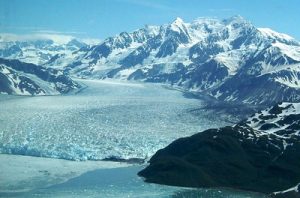
Glaciers are melting and vegetation zones are moving uphill. If fossil fuel use exploded in the 1950s, why do
these changes begin early in the animation? Does this mean that the climate change we are seeing is caused by natural processes and not by fossil fuel use?
As greenhouse gases increase, changes will be more extreme. Oceans will become slightly more acidic, making it more difficult for creatures with carbonate shells to grow, and that includes coral reefs. A study monitoring ocean acidity in the Pacific Northwest found ocean acidity increasing ten times faster than expected and 10% to 20% of shellfish (mussels) being replaced by acid tolerant algae.
Plant and animal species seeking cooler temperatures will need to move poleward 100 to 150 km (60 to 90 miles) or upward 150 m (500 feet) for each 1.0 °C (8 °F) rise in global temperature. There will be a tremendous loss of biodiversity because forest species can’t migrate that rapidly. Biologists have already documented the extinction of high-altitude species that have nowhere higher to go.
Decreased snow packs, shrinking glaciers, and the earlier arrival of spring will all lessen the amount of water available in some regions of the world, including the western United States and much of Asia. Ice will continue to melt and sea level is predicted to rise 18 to 97 cm (7 to 38 inches) by 2100. An increase this large will gradually flood coastal regions where about one-third of the world’s population lives, forcing billions of people to move inland.
Summary
Weather will become more extreme with heat waves and droughts. Some modelers predict that the Midwestern United States will become too dry to support agriculture and that Canada will become the new breadbasket. In all, about 10% to 50% of current cropland worldwide may become unusable if CO2 doubles. There are global monitoring systems to help monitor potential droughts that could turn into famines if they occur in politically and socially unstable regions of the world and if appropriate action isn’t taken in time. One example is FEWS NET, which is a network of social and environmental scientists using geospatial technology to monitor these situations. But even with proper monitoring, if nations don’t act, catastrophes can occur like in Somalia from 2010-2012.
Although scientists do not all agree, hurricanes are likely to become more severe and possibly more frequent. Tropical and subtropical insects will expand their ranges, resulting in the spread of tropical diseases such as malaria, encephalitis, yellow fever, and dengue fever.
You may notice that the numerical predictions above contain wide ranges. Sea level, for example, is expected to rise somewhere between 18 and 97 cm — quite a wide range. What is the reason for this uncertainty? It is partly because scientists cannot predict exactly how the Earth will respond to increased levels of greenhouses gases. How quickly greenhouse gases continue to build up in the atmosphere depends in part on the choices we make.
An important question people ask is this: Are the increases in global temperature natural? In other words, can natural variations in temperature account for the increase in temperature that we see? The scientific data shows no, natural variations can not explain the dramatic increase in global temperatures. Changes in the Sun’s irradiance, El Niño and La Niña cycles, natural changes in greenhouse gas, plate tectonics, and the Milankovitch Cycles cannot account for the increase in temperature that has already happened in the past decades.
In December 2013 and April 2014, the Intergovernmental Panel on Climate Change (IPCC) released a series of damaging reports on not only the current scientific knowledge of climate change, but also on the vulnerability and impacts to humans and ecosystems. Below are two videos detailing the physical science of climate change (Working Group I), and the risks and impacts to the planet (Working Group II). But it is important to get a strong, data driven understanding of climate change. Along with the IPCC, other organizations like the United Nations Environmental Programme (UNEP), World Health Organizations, World Meteorological Organization (WMO), NASA, the National Oceanic and Atmospheric Administration (NOAA), and the U.S. Environmental Protection Agency (EPA).


